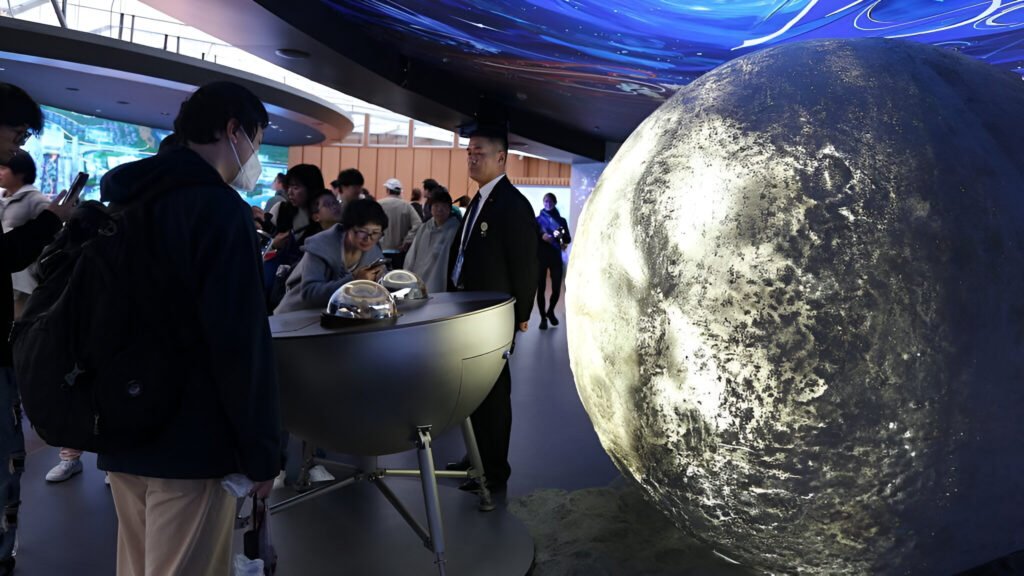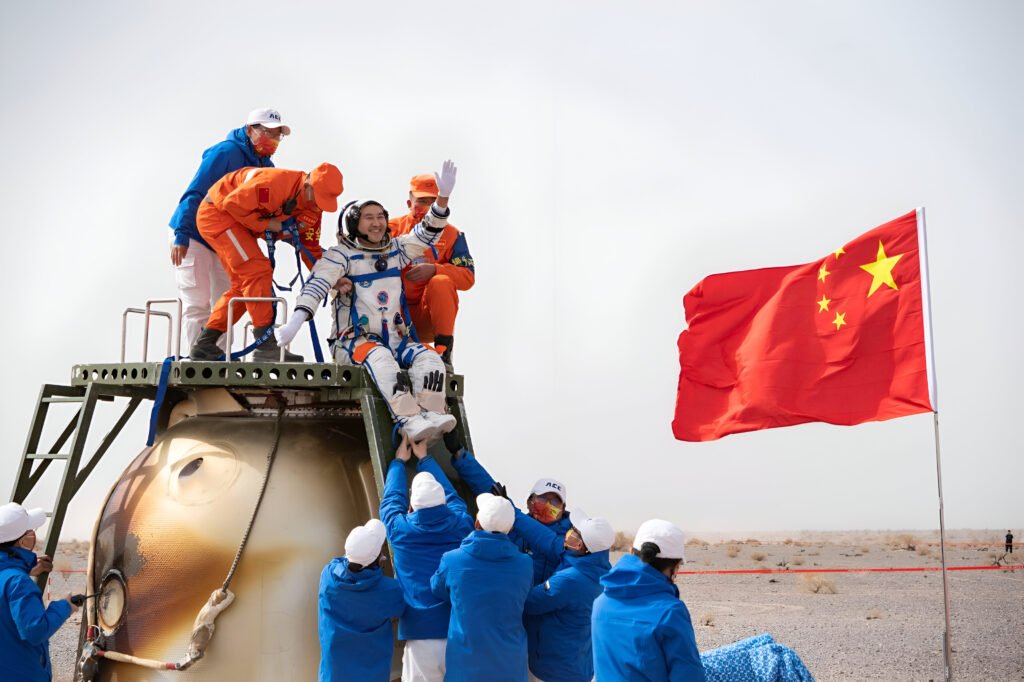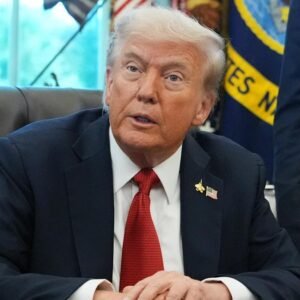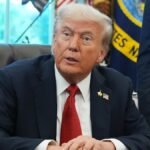
China shares rare lunar samples with American universities despite ongoing trade tensions, opening new doors for scientific collaboration on 2-billion-year-old moon rocks collected by the Chang’e-5 mission.
So get this—while politicians are busy throwing economic punches in the never-ending US-China trade boxing match, scientists from both countries are quietly passing moon rocks across the table. Yep, you read that right. China has just handed over precious lunar samples to American researchers, and I can’t help but think there’s something wonderfully poetic about that.
Ancient Moon Dirt Makes Its Way to America
These aren’t your garden-variety space pebbles we’re talking about. The rocks are about 2 billion years old (wrap your head around THAT for a sec.), scooped up by China’s Chang’e-5 mission back in 2020. Fun fact: they named the mission after their moon goddess, which I personally think is way cooler than our habit of using boring acronyms for everything.
What’s got scientists practically drooling over these particular samples? It’s all about filling gaps in our lunar timeline. See, most moon rocks we’ve studied before are either super ancient (like 3-4 billion years old) or relatively young. These babies fit smack in the middle—kind of like finding that missing family photo album that connects your great-grandparents to your folks.
I remember when the Chang’e-5 mission landed—my space-obsessed buddy wouldn’t shut up about it for weeks. “First lunar sample return in decades!” he kept saying. Honestly, at the time I nodded politely while thinking about what to have for dinner. Now I get why he was so pumped.
Politics Takes Backseat to Scientific Discovery
Let’s face it—US-China relations have been about as comfortable as sitting on a cactus lately. With all the trade wars, tech bans, and enough diplomatic side-eye to make teenagers jealous, you’d expect these countries to be hoarding their scientific treasures, not sharing them.
But science has this weird knack for stepping over political landmines. Brown University and Stony Brook University hit the jackpot and are getting their hands on these space souvenirs, despite the 2011 Congressional ban blocking NASA from working with China.
I chatted with my cousin who works in geo-research, and she put it perfectly: “Politicians fight, scientists collaborate. Always been that way.” John Logsdon from the Space Policy Institute basically said the same thing with fancier words: “Science diplomacy often proceeds even when political relations are strained.” Amen to that! Some stuff is just bigger than political temper tantrums—like figuring out the history of that giant rock that lights up our night sky.
Rock Stars of the Scientific Community
These aren’t just random moon crumbs that someone swept up. They’re from Oceanus Procellarum (Ocean of Storms)—doesn’t that sound like a place where space pirates would hang out? It’s an area where volcanoes kept erupting way longer than they should’ve, according to previous theories.

By poking, prodding, and analyzing these rocks, the lab folks hope to:
- Figure out why some moon spots stayed volcanically active while others cooled.
- Get the scoop on how the moon’s insides changed over billions of years.
- Connect some dots about Earth’s own geological story.
- Maybe, just maybe, find stuff that future moon colonists could use.
I bet those researchers are unpacking those samples with the same giddy excitement I had when I found a mint-condition vintage Star Wars figure at a garage sale. Except, you know, their discovery might actually change our understanding of the solar system instead of just looking cool on a shelf.
Global Moon Rock Party (By Invitation Only)
America isn’t the only one getting moon presents from China. Scientists from France, Germany, Italy, and Sweden also scored invites to this exclusive rock party. It’s like that neighborhood potluck where everyone brings their fanciest dish to impress each other—except with million-dollar lab equipment instead of casseroles.
The crazy part? While government bigwigs are arguing about tariffs and trade deficits over expensive dinners, these science nerds are casually messaging each other like, “Hey, got those moon rocks yet? What are you seeing in the spectroscope?”
It reminds me of how astronauts from feuding countries high-five each other on the International Space Station while their governments throw diplomatic tantrums back on Earth. Some things just matter more than temporary political beef.
When Science Becomes the Ultimate Diplomat
Maybe we should be taking notes here. If space rocks can bring rival superpowers to the same table, perhaps there’s hope for sorting out other messes too. Science has this uncanny way of making us zoom out (pun totally intended) and remember we’re all just confused humans on a spinning blue marble, trying to make sense of the universe.
The journey these moon chunks have made—from lunar surface to Chinese spacecraft to American lab benches—despite the political storm clouds isn’t just good for moon research. It’s a tiny glimmer of hope that we haven’t completely lost our ability to work together when it really matters.
So while trade talks might still be stuck in an endless loop of “no, YOU move first,” at least the rock exchange program is running smoothly. And frankly, that’s something we can happily toast to tonight.









